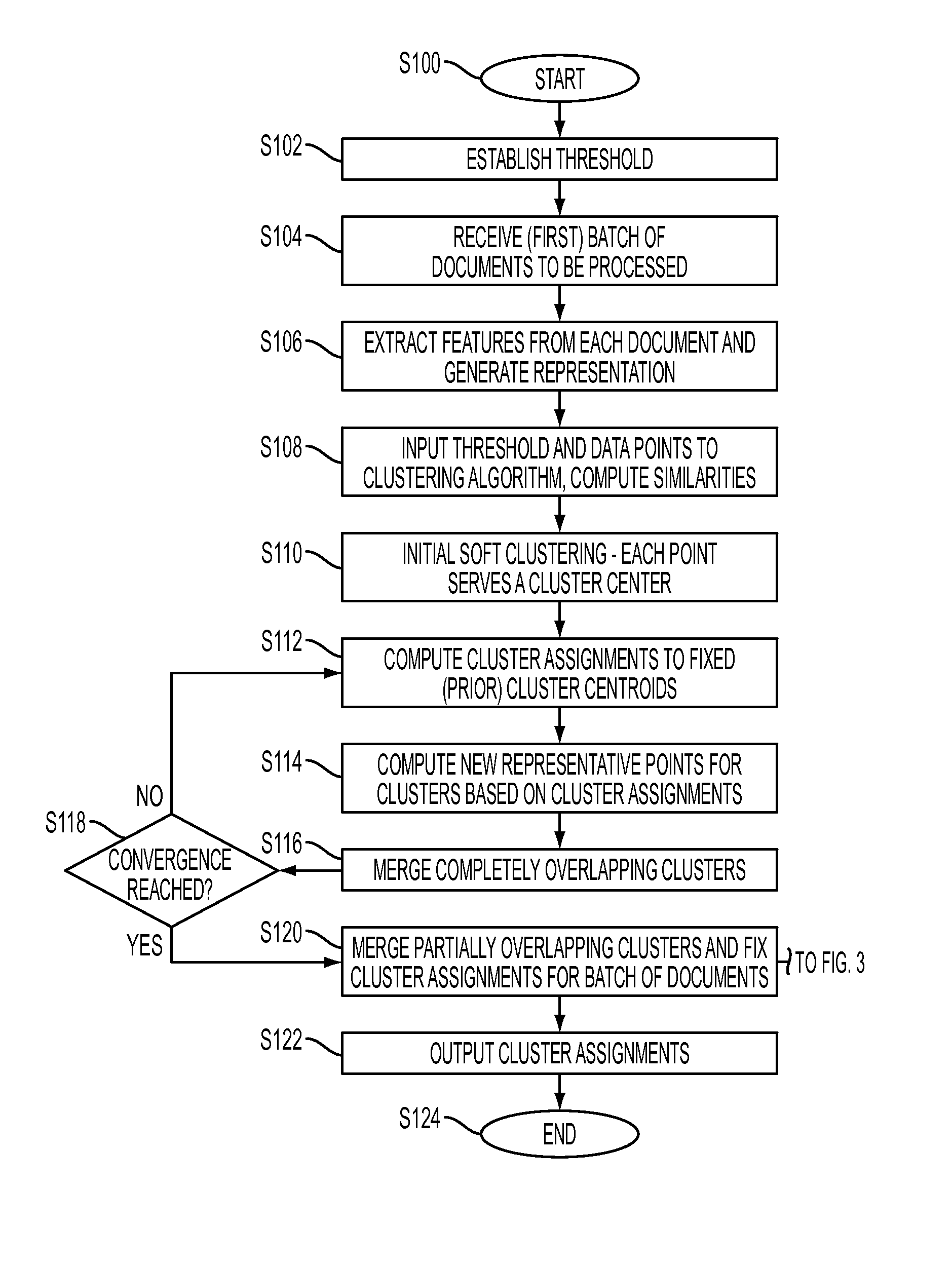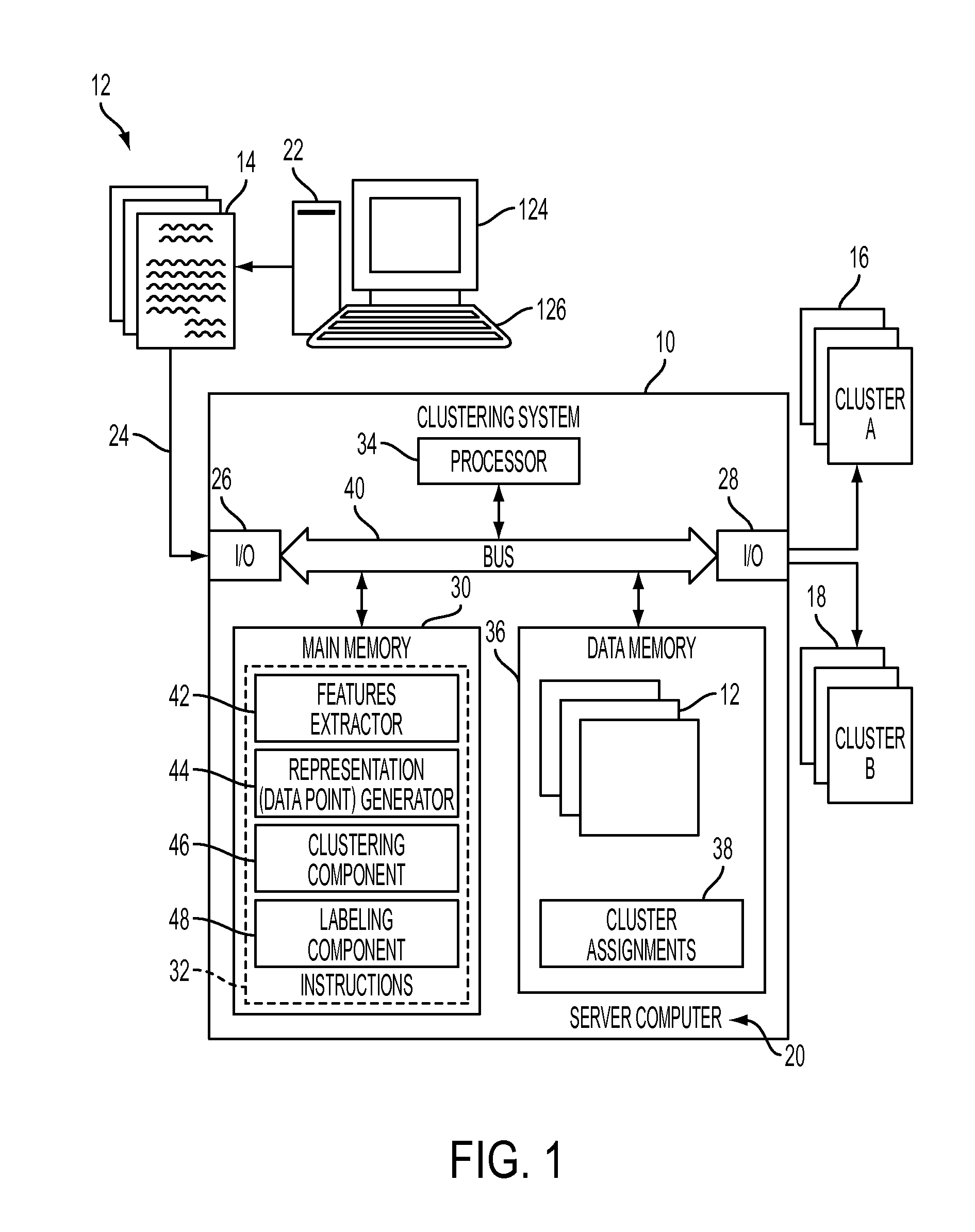Full and semi-batch clustering
a clustering and full-semi-batch technology, applied in the field of documents clustering, can solve the problems of poor performance of so-called k-based algorithms, high data dependence, and difficult identification of clusters
- Summary
- Abstract
- Description
- Claims
- Application Information
AI Technical Summary
Benefits of technology
Problems solved by technology
Method used
Image
Examples
examples
[0103]A class-annotated collection in which each news item in the collection is assigned to some unique class, that represents an event or a story was used to test the method. The clustering outputs of the present method and existing clustering methods were compared with the real class labels. As evaluation measures, the micro-precision, micro-recall and micro-F1 measure were used to evaluate the clustering performance. In other words, the cluster is considered a predictor of the class (after assigning each cluster to the class for which it gives the best F1 measure, as is usually done in the clustering community) and standard quality measure is used for text categorization.
[0104]As the test data, 6496 documents describing 126 stories were obtained from the TDT5 collection (http: / / www.ldc.upenn.edu / ProjectsTDT2004. TDT: Annotation manual-version 1.2), ranging from Mar. 31, 2003, to Sep. 30, 2003. The number of documents for each day was quite variable, as seen in FIG. 4
[0105]From ea...
PUM
 Login to View More
Login to View More Abstract
Description
Claims
Application Information
 Login to View More
Login to View More - R&D
- Intellectual Property
- Life Sciences
- Materials
- Tech Scout
- Unparalleled Data Quality
- Higher Quality Content
- 60% Fewer Hallucinations
Browse by: Latest US Patents, China's latest patents, Technical Efficacy Thesaurus, Application Domain, Technology Topic, Popular Technical Reports.
© 2025 PatSnap. All rights reserved.Legal|Privacy policy|Modern Slavery Act Transparency Statement|Sitemap|About US| Contact US: help@patsnap.com



